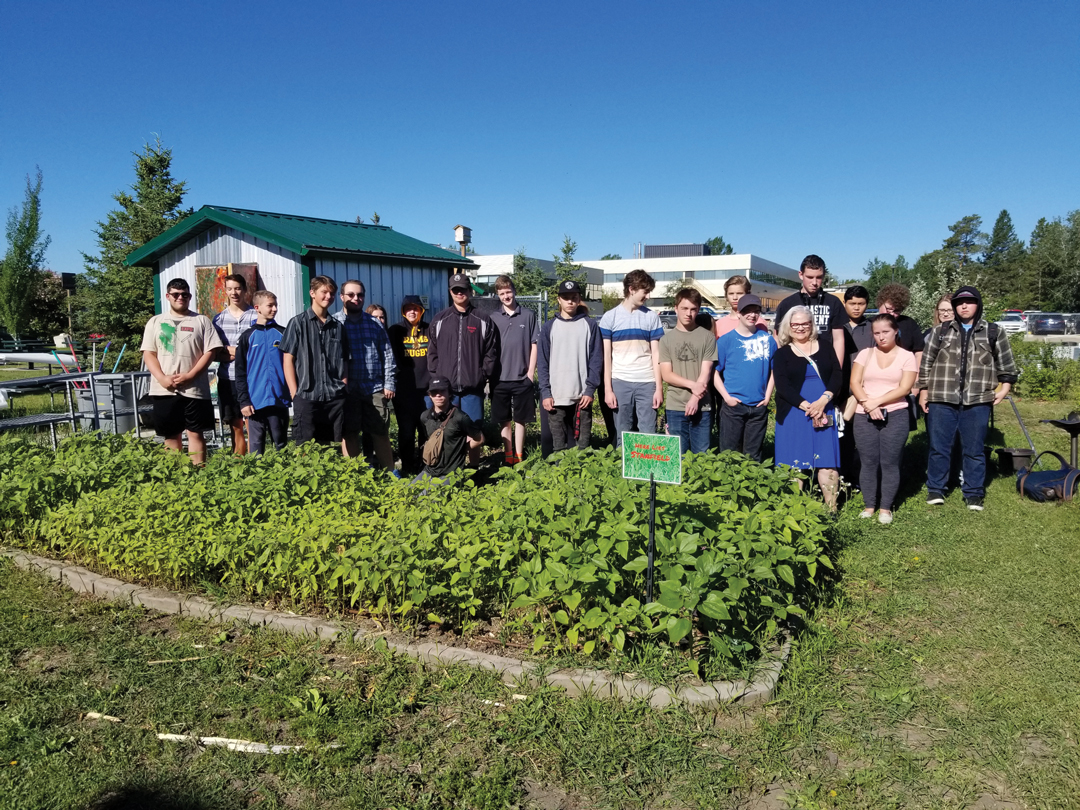CRAZY TRAINS
BY LEE HART • PHOTO COURTESY OF SOUTH WEST TERMINAL
Farmers are excited that redesigned High Efficiency Product trains (HEP trains) are now able to carry substantially more grain than standard configurations, said Monty Reich, general manager of South West Terminal near Gull Lake, SK. With a potentially above-average crop coming in to elevators in many parts of Western Canada, this will certainly help get the year’s crop to export position in a timely fashion.
Earlier this summer, the farmer-owned grain terminal and inputs retailer loaded a CP train with 22,223 metric tonnes of durum in 224 new, high-capacity hopper cars. In tandem with increased capacity, HEP trains are comprised of more cars than in the past.
Now up to 8,500 feet long, the standard length was previously 7,000 feet. “It is a significant difference and improvement,” said Reich. “A couple years ago with the old-style hopper car, even a loaded 8,500-foot train could have handled about 10,000 tonnes. Now with these new hopper cars that increases to about 15,000 tonnes. That is huge improvement in efficiency.”
The new cars feature a capacity 10 per cent greater by weight than the older-model Government of Canada cars, and 15 per cent more volume. The cars carry this extra product on a frame five per cent, about three feet, shorter than that of older cars. More cars can subsequently fit into a train of the same length.
The cars are part of a four-year, $500 million fleet upgrade investment announced by CP in 2018. The money will cover 5,900 of the new high capacity hopper cars. CP had 1,000 of these in service by the spring of 2019. By the end of 2020 the company will have more than 3,300 high-capacity cars in service. The remaining 2,600 are to be put into service in 2021 and 2022.

CP Rail loaded its first 8,500-foot HEP train at the G3 Pasqua elevator near Moose Jaw, SK, in late 2018. “By the end of 2020, we will have more than 3,300 of these high-capacity hopper cars in service,” said Murray Hamilton, the company’s assistant vice-president, sales and marketing, grain, in his online August 2020 grain update. “The HEP train model amplified by the new high-capacity grain hopper cars increases grain carrying capacity by more than 40 per cent per train.”
At the same time, CN has also invested money to improve the efficiency of its grain trains. In 2018, the company launched a plan to buy 1,000 grain hopper cars over two years to refresh its fleet of 12,000 grain cars and better meet the demands of western farmers. In July 2020, CN announced further plans to acquire an additional 1,500 new-generation, high-capacity grain hopper cars with delivery starting January 2021.
This drive to increase efficiency is being implemented across the western Canadian grain handling system. Grain companies have universally supported the move. Where space is available at existing elevators, and certainly with any new builds, siding capacity is being increased to handle the longer trains. Loop track sidings are the preferred design, but South West Terminal has installed three 8,500-foot parallel tracks to accommodate the larger trains. According to Reich, this provides the flexibility, for example, to simultaneously load a grain train on one siding and fertilizer cars on another.
Siding designs may very, but grain companies are moving forward to increase siding capacity, said Bruce McFadden, Quorum Corporation director of research and analysis, grain industry section. Quorum is solely responsible for the monitoring of Canada’s Prairie grain handling and transportation system.
As of midsummer 2020, McFadden said there were 24 licensed loop track elevator facilities across Western Canada with eight more under construction. These are expected to be completed by early to mid-2021.
McFadden also pointed out that G3 recently opened a new export terminal in Vancouver with a loop track, and Parrish & Heimbecker is rebuilding a terminal facility in British Columbia’s Lower Mainland that involved a hybrid or “semi-loop” design to accommodate longer trains.
“The movement to the longer HEP trains and the high-capacity rail cars is definitely being supported by the grain handling infrastructure,” said McFadden. “Whether it is at the elevator location on the Prairies or at the export terminal, the new design is being incorporated.
“Any move to improve the efficiency of our grain handling and transportation system is important and positive,” he said. “It is a very competitive industry in a global sense, and particularly considering some of the distances the Canadian industry faces in getting commodities to tidewater, any efficiency is welcome.”







Comments